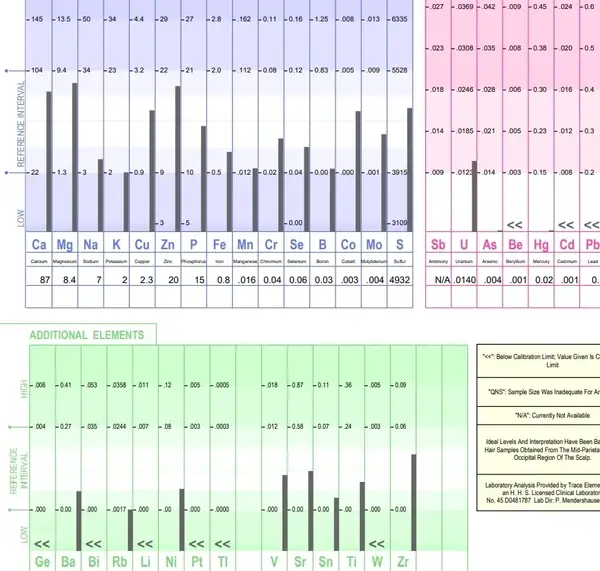[Original publication: Trace Elements Newsletter, Volume 15, Number 2, May/June 2004]
Hair tissue mineral analysis (HTMA) often reveals the presence of nutritional imbalances, metabolic disturbances and/or heavy metal exposures that are often not detected by other types of routine screening tests. The following case studies are just some examples that show the value of HTMA in revealing existing and potential health conditions that may otherwise would have gone unrecognized.
Case #1: Arsenic Exposure
This first case involved a young man who was experiencing a number of health complaints of undetermined origin. His symptoms were general, but periodic fatigue and confusion were of major concern. Other laboratory tests that were performed failed to show any significant abnormalities that could pinpoint a reason for his vague symptoms. Therefore, the doctor submitted a hair sample for analysis.
The HTMA test results revealed a Parasympathetic or Slow Metabolic Type #1 mineral pattern. A potential inflammatory response was noted due to the markedly elevated sodium-to potassium (Na/K) ratio of 15:1 (TEI ideal Na/K = 2.4:1). A glucose disturbance was also reflected by the markedly reduced calcium/magnesium (Ca/Mg) ratio of 2.5:1 (TEI ideal Ca/Mg = 7:1). In this case however, the most startling observation in the test results was that the patient’s arsenic level was found to be over three and a half times above the established reference range. TEI’s upper range for arsenic is < 0.020 mg%. Results were rechecked and confirmed. The patient was unable to provide a possible exposure source to arsenic from his occupation, working environment, or hobbies. It was then suggested that samples from other family members be submitted for analysis to determine if they had been exposed. HTMA results confirmed the presence of elevated arsenic in the other family members as well.
Since tests results of all family members revealed arsenic elevations, it was apparent that a common exposure existed. A water mineral analysis was suggested in order to determine if this was a possible source. Water analysis performed locally found the arsenic level to be several times above the acceptable EPA Standard. The family was then promptly informed to avoid their drinking water until a proper filtration system could be installed.
It should be emphasized that HTMA proved invaluable in determining excess arsenic in this particular family that may have otherwise gone unnoticed for years and which could have contributed to a host of health and developmental problems. As a result of HTMA, a targeted metabolic approach to nutritional therapy was instituted in order to reduce excessive arsenic tissue burden and to address the other nutritional and metabolic imbalances found within this family.
Case #2: Uranium and Radon Exposure
Hair samples were submitted to our laboratory from family members living in the northeast area of the United States. The major findings in the test reports were markedly elevated levels of uranium (U). Test results for uranium revealed levels greater than 0.3200 milligrams-percent (mg%) in the child and 0.6600 mg% in the parent. These values represent levels of over 20 and 40 times the established normal range respectively. Obviously these results were quite significant, as the normal reference range for hair scalp uranium established here at Trace Elements testing laboratory is less than 0.0170 mg%. It should be noted that the [Continue reading full article here]








